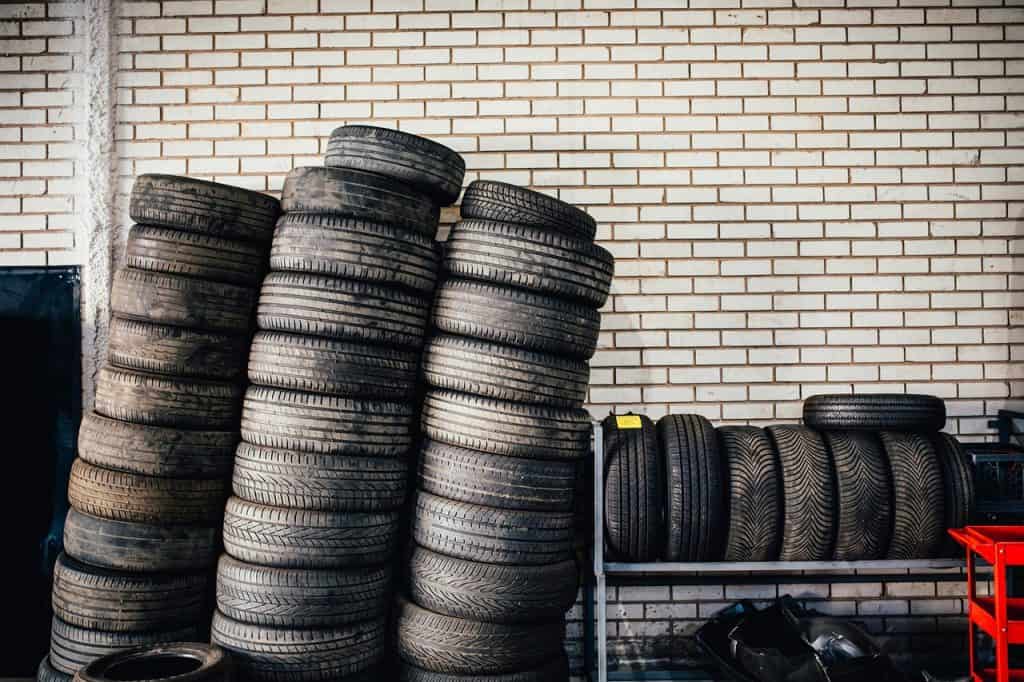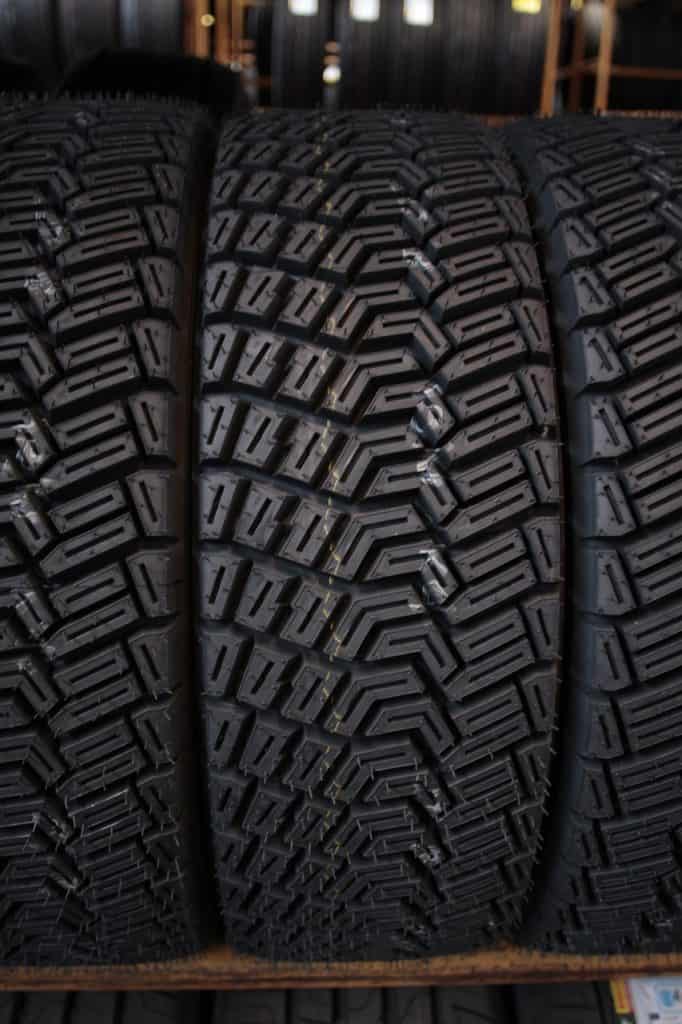The choice of tyres, or the types of tyres, has grown hugely for consumers as technology has improved. Now the choice can be a little bewildering. For example, we now have the option of Summer tyres and Winter tyres, the purpose of which is obvious.
Tyres designed for winter are made of a softer compound of natural rubber content, which means the tread is softer and affords better grip to help defeat aquaplaning or for gathering snow in the deeper tread pattern.

They work best when the temperature drops below about 7 or 8 degrees Centigrade. Using them in warmer temperatures, year round say, will cause them to heat up too much, exacerbating wear.
Summer tyres have a less complex tread pattern putting more rubber on the road in dry conditions. Consider Formula One tyres as an extreme example: The dry versions have no tread pattern at all, the better to put more rubber surface on the track.
For mainstream cars, it’s the same principle, but allowing for public roads. They do, however, have harder rubber compounds, ideal for the best performance in warmer temperatures but they do get harder still when the thermometer drops.
The benefits of using both types is clear. More ride comfort and better dry grip in the Summer, safer handling in the Winter. This means of course that car owners need two sets of tyres.
It has become standard practice to switch them over annually. This would seem like twice the expense but in fact, the two sets last twice as long.
Your local tyre centre can swap them over for you but the question still arises about what to do with the spare set. So here is a guide about how to store tyres:
Tyre storage solutions
What is the proper way to store tyres? Well, outdoor tyre storage is generally not recommended even if they are covered with a tarpaulin.
Damp conditions, extremes of temperature, exposure to sunlight and the like all take their toll. Adverse conditions will have an effect quicker on those rubber hoops than may be thought.
That’s why tyre care is as important off the vehicle as on.
Some people choose to have two sets of rims to save the problem of swapping tyres over, avoiding the potential for tyre bead damage.
This is more expensive of course, but it’s only done once, so spare rims make sense. Indeed, some people save on costs by using old-fashioned steel rims in winter but they are not as attractive as a nice set of alloys. The following will give owners a good idea of the right procedure:
Safety First
So there is a procedure to follow when changing from Summer to Winter tyres. Wheels can be changed over at home by a suitably equipped owner.
Rather than use the emergency jack, for safety’s sake a pneumatic trolley jack is preferred. Removing the wheels is not difficult with a brace, but careful handling is needed.
Anyone who is inexperienced in changing wheels or unsure about the weight involved should get their local professional tyre fitting company to attend to it.
For the vast majority of folk, removing the tyres is not practical at home, so get your tyre service to do the switch and take the tyres home for storage.
It is also possible to use a ‘tyre hotel’, whereby the tyres, on or off the rims, will be stored for you by your tyre fitting service or your independent choice.
A Good Clean
Once off the vehicle, it is essential that the tyres are thoroughly cleaned. This is very important. While the wheels are off, it makes sense to clean them with a good alloy cleaner too, inside and out, to remove damaging road and brake dust.
Clean the tyres with dilute detergent, using a stiff brush. Allow them to dry fully (this is crucial, to avoid being stored damp) before packing them away.
Use Tyre storage bags
Long-term storage requires a bit of pre-planning. Some people ask if it is okay to store tyres in a shed to which the answer is no.
The average garden shed is subject to changes in temperature and is probably a bit damp and also tyre rubber can be affected by oil or grease. They are also not very secure, making theft a possibility. Tyres should be stored carefully as follows:
Pack The Tyres Carefully
Put the individual and clean tyre or wheel/tyre combo in a plastic bag. Black sacks are good or it is possible to purchase purpose-designed bags.

Ideally, owners should remove the air, as oxygen can cause deterioration, (suction from a vacuum cleaner does the job) and carefully seal them up with strong tape. This helps prevent cracking and the drying of natural oils in the rubber compound.
Maintain An Even Temperature
Where the tyres are kept is as important as how they are kept. As mentioned, sheds are a bad idea and outdoor storage is definitely out. Many homes have garages which may be suitable; the key is for the temperature to not vary too much and for conditions to be cool, dry and ventilated.
Treat Summer & Winter Tyres Differently
Winter tyres need to be kept cool while in storage as sunlight and UV rays can cause drying and result in deterioration. As long as the area is dry and slightly ventilated there should not be a problem.
Summer tyres though can be a bit more problematic. Being of a harder compound with less elasticity, they will be more prone to cracking and will prefer a warmer environment.
Under-stairs cupboards could work. Spare rooms in the house would be the ideal location although it will depend on the opinion of other people in the property perhaps.
How long can you store tyres?
It is very unlikely that your tyres will be stored longer than a few months as the idea is to use both sets during a one-year period. Tyres can be kept for longer provided they are well protected as described above.
However, very long-term storage may cause cracking so such tyres need to be properly inspected before ref-fitting. In fact, any tyres that have been in storage should be checked over for signs of damage before being fitted to rims or put back on the car. It’s the safe thing to do.
How to store winter tyres
The storage of winter tyres is as described above, that is, dry, shady conditions but there’s another factor too. Obviously, tyres that are removed from the rims will not be affected but if left on the wheels, is it necessary to deflate them?
The answer is no: The best way to keep tyres in good condition is to keep them inflated and secure on the beads. The careful owner will check the air pressure routinely, just as when in use. It also makes sense to rotate them when standing upright, which we cover here:
How should tires be stored, flat (horizontally) or upright (vertically)?
Rubber tyres off the rims should always be stored upright and rotated from time to time. The majority of garage floors are likely to be concrete, which gets cold, so ideally stand them on a pallet, which can be sourced cheaply.
Tyres on rims can be stacked. It is possible to buy stands for the purpose, which makes sense as otherwise they could topple, potentially causing damage. Again, store off the floor.
Summary on how to store tyres
Changing tyre seasonally makes sense for all the reasons described above but storage may well be an issue for some. That’s when it is time to turn to a nearby tyre storage facility or ‘tyre hotel’ as they are popularly known. Most of the established tyre service centres will have an option.
A good service will not be too expensive, a few pounds per tyre for the season (although they may want the motorist to buy the tyres through them), and will provide the correct storage environment for the precious rubber.
All that the owner need then do is make an appointment to have them swapped over again at a suitable time. There may well be a fitting charge but it does make life a lot easier.
Seasonal tyres work. Drivers may well consider that our comparatively mild weather doesn’t warrant the extra trouble, but winter tyres will provide road safety benefits and that can’t be argued against.
The important thing to remember is that, on or off the car, tyre care is vital all year round.
